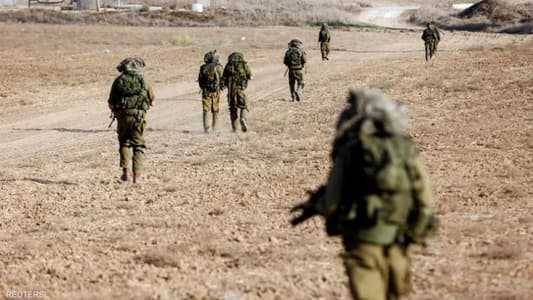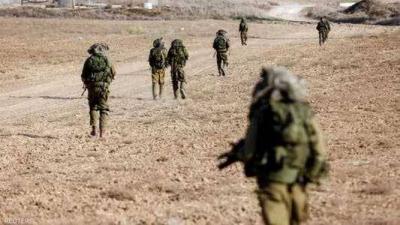The "red lines" are gradually collapsing under the roof of a major war that has so far been prevented from breaking out due to realistic brakes and strategic nature from the "Axis of Resistance," as well as considerations of priorities for international capitals, primarily Washington, linked to its interests and fears of a wide conflict that may be known how it starts, but no one can predict how it will end, according to "Al-Rai" from Kuwait.
From Mazzeh in Syria, passing through Bazourieh in southern Lebanon, to Ain al-Asad in Iraq and the Red Sea, a arc of militarized escalation laden with elements of an intelligence war is raging between Israel and Iran over the fiery volcano of Gaza ignited since October 7, alongside ongoing confrontations across all arenas of the Resistance Axis, which have drawn a mutual deterrence struggle under two major titles that almost bind both Tel Aviv and Tehran in their opposing choices:
- Israel, in light of the existential war it considers itself to be waging since the catastrophe of October 7, mobilizing all means of traditional and non-traditional warfare, even colliding with its main safety umbrella, the United States.
- Iran, based on managing strategic realities, some of which are related to the open multi-front influence war in the region for nearly two decades, while others are connected to protecting the regime in Iran and avoiding its involvement in a large confrontation, unless its fate is put at stake, it threatens to leave it disarmed from the arms it has worked to plant in the region for decades.
Meanwhile, the new Israeli strike in Mazzeh, which claimed the lives of five Revolutionary Guard leaders, notably Haj Sadiq Amidi Zadeh, is at the forefront of attention as the second significant targeting in Damascus (after the assassination of Revolutionary Guard leader Reza Mousavi on December 25), which has become a security weak point, assessed on the scale of the intelligence struggle in which Tel Aviv achieved a point yesterday at the expense of Iran's intelligence mind in Syria, namely Haj Sadiq, who was revealed to also be leading the Revolutionary Guard's plans to execute operations against U.S. forces in Syria.
The parallel Israeli airstrike in Bazourieh (less than 5 kilometers from the city of Tyre) was no less grave and significant. The strike in deep southern Lebanon yesterday is considered the third breach security-wise that has allowed Tel Aviv, after the assassination of Hamas leader Saleh Al-Arouri in the southern suburb of Beirut (January 2) and then Hezbollah leader (Rejectionist forces) Wissam Tawil in Kherbet Selm (January 8), to eliminate the party official Ali Muhammad Hadrage along with one other member and two other individuals rumored to be from Hamas.
Reports in Beirut indicated that Hadrage and the second Hezbollah member killed by a drone targeting their car were from the party’s military supply unit, while Arab media has mentioned that Hadrage was a leader in the party's air force and acted as a liaison between Hamas and Hezbollah. By the first hours of the evening, the identity of the second Hezbollah member in the car with Hadrage was not yet known. Hezbollah mourned Hadrage, describing him as a fighter from Bazourieh who became a martyr on the road to Jerusalem, before the official National News Agency reported that the bodies of two other individuals were retrieved from the vicinity of the vehicle that was targeted on the road to the northern tower – Bazourieh, raising the number of victims to four, two were retrieved from inside the car and the other two from the surrounding orchard adjacent to the road.
In light of these rapidly evolving developments, according to "Al-Rai" from Kuwait, fears rose regarding security-military repercussions of the parallel assassinations in Mazzeh and Bazourieh, especially on the Lebanese front, although two developments emerged after the operations reflecting Iran's direction to maintain Hezbollah's policy of restraint and avoid being drawn into a firefield defined by Tel Aviv’s rules and timing, opting for a soft retaliation, while Tehran itself adheres to discipline in a response already confirmed to happen at the appropriate timing and place, but difficult to imagine it escaping the principle of not sliding into a full-blown war that it would withdraw from under the pretext that it is an Israeli trap.
The two developments are:
- Reuters reported from regional and Iranian sources that leaders in the Revolutionary Guard and Hezbollah are present in Yemen to direct Houthi attacks on ships. Iran has intensified weapons supplies to the Houthis since the Gaza war began, among other more provocative information that seemed closer to deliberate leaks as Tehran emerged from the shadows regarding its distance from what the Houthis do in the Red Sea to announce a leadership and control command in their operations against ships heading to Israel, and even about enhancing their ballistic missile capabilities, and thus what subsequent targeting may entail.
Some read this development as a multi-dimensional message from Tehran, especially as it will adopt the Houthi approach in the next phase as one of the key fronts in responding and deterring against Israel and the Americans, after its direct momentum through the Revolutionary Guard to strike targets in Iraq, Syria, and then Pakistan nearly compromised it in a dangerous conflict that is hard to contain or pass through favorably with Islamabad.
- The second development is the announcement of a missile strike on the Ain al-Asad U.S. base in Iraq, which was claimed by Iraqi Hezbollah and Harakat al-Nujaba, in an additional indication that Mesopotamia will remain one of the most prominent arenas for Iranian response within the frameworks of battles between wars.




